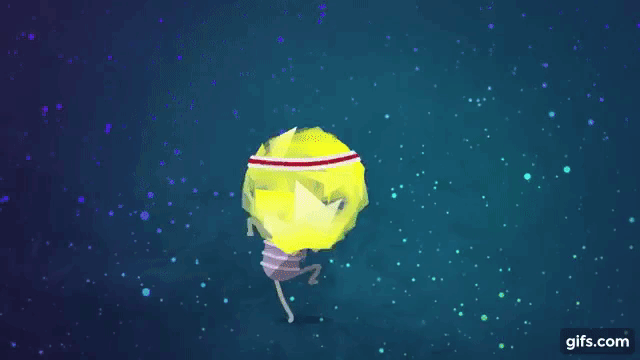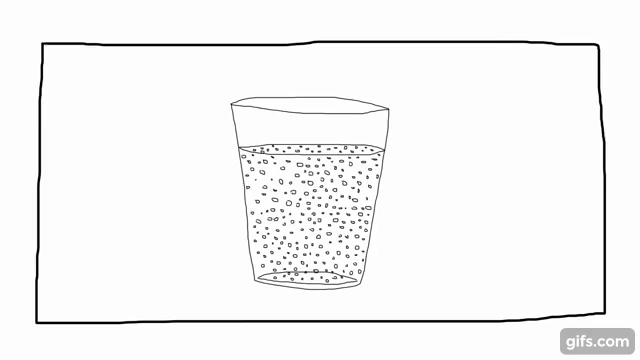What is light.
I asked that question to 5 people: my grandmother, my dad, this girl that's little older than me and a girl about 10 years old. I told them, "if someone asked you * 'what is light?' * what would you answer? "
Granny thought about it for a few seconds and told me that honestly, she did not know, my dad answered me that is what happens when a molecule releases energy, the girl answered that it was the fastest thing in the universe, and the little girl only pointed to me the sun with the face of "what an idiot" and said, "that!"
And for the fifth person? Well, it was me. Ignorance does not discriminate. I didn't have a clear idea of what happened when the morning greeted me with a figurative slap of heat. So I set out to answer my questions, here is the result.

How does it move?
Taking things for granted is something humans are experts at, the light being a VIP in this club. One answer that could leave the majority satisfied is that light is the least amount of information that can be transported: a photon. Photons are elementary particles that can not be divided, that have no mass and that can behave like a wave (ex: sound) or as particles.
When you mention "light" you usually refer to visible light, which we can see with our eyes. But that would only be a small part of the whole * electromagnetic spectrum *. Energy in the form of electromagnetic radiation. The truth is that our eyes fall short when you realize the number of types of "light" that exist.

All types of light have several important characteristics to differentiate them: wavelength, their frequency, how much energy they carry, etc.
The visible light is in the middle of the spectrum, and it has a length of about 700 ** nanometers **, the size of a bacterium.
In the case of Radio Waves, they can have a size of 100 km while their counterpart on the other side of the spectrum, the Gamma Rays, about 10 picometers. How small is that? 10 picometers are *** more *** small than a hydrogen atom. A hydrogen atom is for a penny, what a penny is for the moon.
Now, here comes one of the most extraordinary facts of modern science: particle-wave duality. All the above-mentioned types of light, are basically the same: photons. And all travel at the same speed: 299,792,458 meters per second.

How is it created?
In general, photons are created when an atom (or a molecule) falls from a state with more energy to a lesser one. This is one of the forms of radiation. And in that same way, that energy that released in the form of electrons, say a Molecule A, can be "picked up" by a Molecule B and raise its energy state. In other words, light is produced when an atom (or molecule) releases energy, and when you feel that light gives you heat, it is simply the molecules receiving the energy.
When an electron jumps out of a molecule, it creates a magnetic field that in turn produces an electric field perpendicular to itself. Hence the electromagnetic name. These fields move like this, transferring energy from one place to another.
Now, we have all heard about the speed of light, which is 299,792,458 m / s and is known as "c". Do you want to travel at this speed? Simple! You just have to make all the particles that constitute you, stop having mass!
Leaving aside the probabilities of humans traveling at the speed of light (0%); the light travels in "c" always, this is true no matter what. Even in cases where the light seems to be interrupted briefly by an object, the light always moves in c.

Answer
Light is part of the electromagnetic spectrum, composed of photons that are elementary particles that also happen to behave like waves. Powered by 2 perpendicular fields, traveling at the highest speed in the universe.
The next time you are asked "what is light?", You will have an answer.
Good lesson. To take it a little further, all photons are not created equally since some have more energy than others. Different materials are made of atoms with electrons in different orbits and the energy absorbed must be the correct amount to move the electron of that atom from one orbit to another. The energy of a photon is tied to the frequency of the radiation through Planck's equation.
When an object is exposed to radiation, sunlight for example, the energy may be reflected away, absorbed, or simply pass through. These three properties are called the reflectivity, absortivity, and transmistivity. A fourth property is the ability of a material to emit radiation as the electron moves from the higher energy state to it normal condition is called emissivity. All four of these properties are dependent on the frequency of the radiation to which the object is exposed. Bear with me, we'll get there.
Since the electron may not take the same route back to its normal state, as the electron moves back photons are emitted (emissivity) at different wavelengths. Sunlight is allowed to pass through the glass in a car window (transmistivity) and be absorbed (absorbtivity) by the interior of the car. As the electrons make their way back to their normal position different wavelengths are emitted that can't pass through the glass window and often are reflected back (reflectivity) into the car causing it to heat up.
But the most amazing aspect of this is when radiation impacts an object and certain wavelengths are either reflected or emitted back out and reaches our eyes allowing us not only to see the object but see the object in color.
#funny
I will laugh again when you post another funny thing